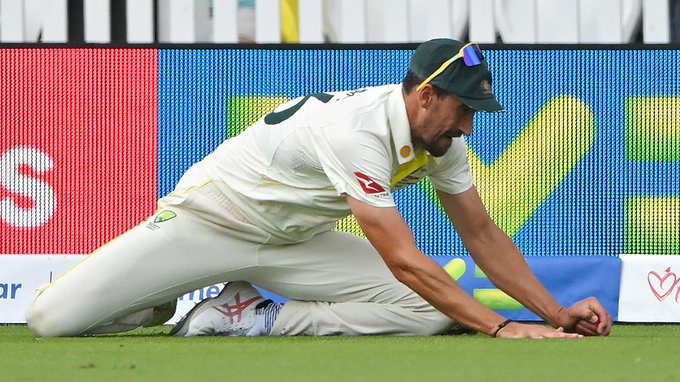MCC explains reason behind Ben Duckett given not out

Marylebone Cricket Club (MCC) on Saturday clarified the reason behind third umpire Marais Erasmus’ decision to signal Ben Duckett not-out after Mitchell Starc pulled off a stunning catch at fine leg towards the fag end of Day 4 of the second Ashes Test. Notably, the Aussie quick was sure of his chances but replays showed that the ball touched the turf as Starc slid around the boundary. Thus, Erasmus put the green lights on which confused the Australia cricketers as skipper Pat Cummins had an argumentive conversation with the on-field umpires.
Former cricketers in the form of Glenn McGrath and Ricky Ponting too jumped in from the commentary box and criticized Erasmus’ decision. Social media was buzzing as well and thus, MCC issued a statement explaining the reason behind the call. The custodians of the cricketing laws posted a thread on Twitter stating that the ball touched the surface when Starc wasn’t in full control and thus, the third umpire was correct in his decision.
“Law 33.3 clearly states that a catch is only completed when the fielder has ‘complete control over the ball and his/her movement’. The ball cannot touch the ground before then. In this particular incident, Mitchell Starc, was still sliding as the ball rubbed the ground, therefore he was not in control of his movement,” MCC clarified.
Don’t think I understand the rules properly to really tell you whether it’s right or wrong: Marcus Trescothick
Talking about the incident, England batting coach Marcus Trescothick stated that he doesn’t have much knowledge about the rules and thus, it will be difficult for him to explain. However, he stated that Starc wasn’t in full control of the ball and thus, the umpires called it a not-out.
“I first thought it looked good, when you see it from a distance. Obviously then the ball slides along the ground. But at the time I don’t really think we understood the rules. I don’t think I understand the rules properly to really tell you whether it’s right or wrong. But from my understanding and what’s been said by umpires and stuff, you’ve got to have control of the ball and your body until the motion is finished. And obviously, that would be the challenging part to the catch,” Trescothick mentioned as quoted by Cricbuzz.
